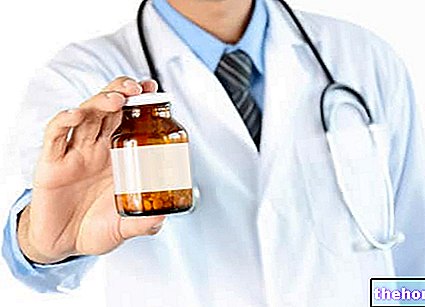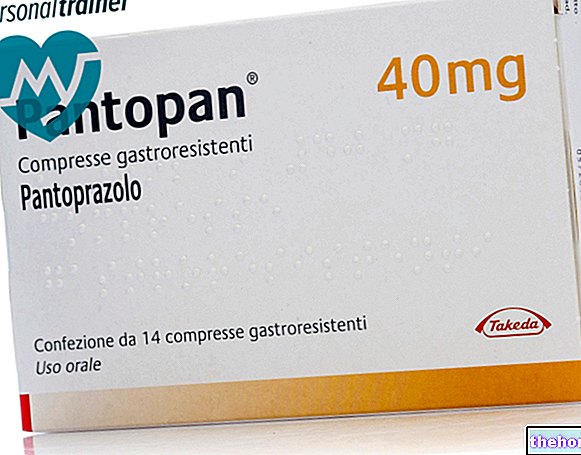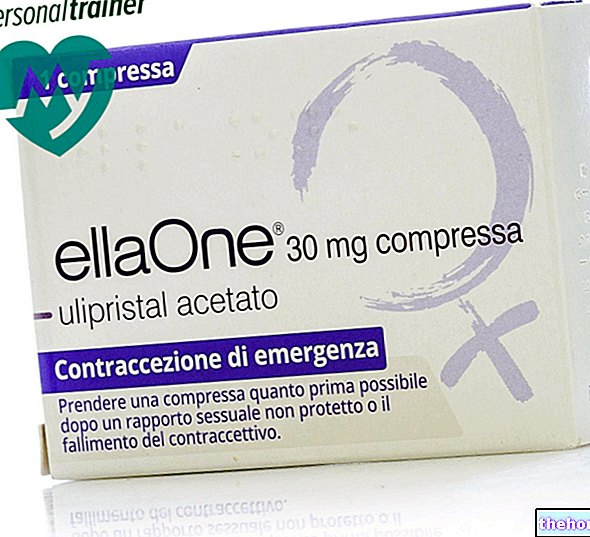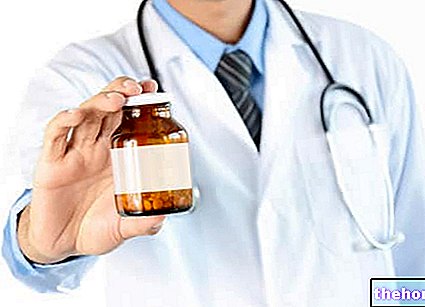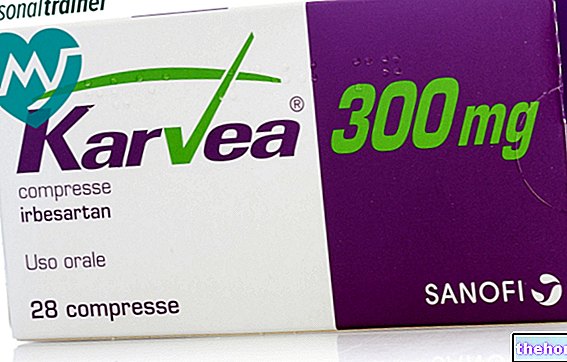Active ingredients: Adapalene, Benzoyl peroxide
Epiduo 0.1% / 2.5%, gel
Why is Epiduo used? What is it for?
Epiduo is indicated for the treatment of acne.
Epiduo gel contains two active ingredients, adapalene and benzoyl peroxide, which work together but in different ways.
Adapalene belongs to a group of substances known as retinoids and acts specifically on the skin processes that cause acne.
The other active ingredient, benzoyl peroxide, acts as an antibacterial and exerts a soothing and exfoliating action on the outermost layer of the skin.
Contraindications When Epiduo should not be used
Do not use Epiduo:
- if you are allergic to the active substances or any of the other ingredients of this medicine (listed in section 6).
Precautions for use What you need to know before taking Epiduo
- Do not use Epiduo on areas where there are wounds, scratches or eczema.
- Avoid contact of Epiduo with the eyes, mouth, nostrils and other very sensitive areas of the body. In case of contact with any of these areas, immediately rinse the affected area with plenty of warm water.
- Avoid excessive exposure to sunlight and UV lamps.
- Avoid contact of Epiduo with hair or colored fabrics as it may discolour them, and wash your hands thoroughly after using the medicine.
Talk to your doctor or pharmacist before using Epiduo.
Interactions Which drugs or foods can modify the effect of Epiduo
- Do not use other acne products (containing benzoyl peroxide and / or retinoids) at the same time as Epiduo.
- Avoid using Epiduo in conjunction with cosmetic products that have irritating, drying or exfoliating effects on the skin.
Warnings It is important to know that:
Pregnancy and breastfeeding
Epiduo should not be used during pregnancy.
If you become pregnant while being treated with Epiduo, stop the treatment and tell your doctor as soon as possible for any check-ups.
Epiduo can be used during breastfeeding. To avoid contact exposure of the infant, do not apply Epiduo to the chest area.
Consult your doctor or pharmacist before taking any medication.
Driving and using machines
Not relevant.
Epiduo contains propylene glycol (E1520), a component that can cause skin irritation.
Dose, Method and Time of Administration How to use Epiduo: Posology
Always use this medicine exactly as your doctor has told you. If in doubt, consult your doctor or pharmacist.
Epiduo is intended for use in adults and adolescents 9 years of age and older only. Apply a thin layer of gel to acne affected areas once a day at bedtime, avoiding contact with eyes. , lips and nostrils Wash and dry the skin before each application After applying the product, wash your hands thoroughly.
Your doctor will tell you how long you will need to use Epiduo for.
If you notice that the effect of Epiduo is too strong or too weak, consult your doctor or pharmacist.
If the application of Epiduo causes persistent irritation, contact your doctor. Your doctor may ask you to apply a moisturizer, use the gel less frequently, stop treatment for a short time or stop it permanently.
If you forget to use Epiduo:
Do not apply a double dose to make up for a forgotten single application.
Overdose What to do if you have taken too much Epiduo
If you apply more Epiduo to the skin than you should, your acne will not go away faster but your skin may become irritated and red.
Please contact your doctor or hospital if:
- He used more Epiduo than he should have.
- A child accidentally took the product.
- He accidentally swallowed the product.
Your doctor will advise you on what measures to take.
Side Effects What are the side effects of Epiduo
Like all medicines, this medicine can cause side effects, although not everybody gets them.
Epiduo can cause the following side effects at the application site:
Common side effects (affects less than 1 in 10 patients)
- dry skin
- local rash (irritative contact dermatitis)
- burning sensation
- skin irritation
- redness
- peeling
Uncommon side effects (affects less than 1 in 100 patients)
- itchy skin
- sunburn
Frequency not known (cannot be estimated from the available data): swelling of the face, allergic contact reactions, swelling of the eyelid, narrowing of the throat, skin pain (stinging pain), blisters (blisters).
In the event that skin irritation occurs following the application of Epiduo, this is generally mild or moderate, with local signs such as redness, dryness, peeling, burning and skin pain (stinging pain), which peak during the first week. and then disappear without additional treatments.
Reporting of side effects
If you get any side effects, talk to your doctor or pharmacist. This includes any possible side effects not listed in this leaflet. You can also report side effects directly via the national reporting system at www.agenziafarmaco.gov.it/it/responsabili. By reporting side effects you can help provide more information on the safety of this medicine.
Expiry and Retention
Keep this medicine out of the sight and reach of children.
Do not use this medicine after the expiry date which is stated on the carton. The expiry date refers to the last day of that month.
Discard the tube or multidose container with airtight pump 6 months after first opening.
Do not store above 25 ° C.
Do not throw any medicines via wastewater or household waste. Ask your pharmacist how to throw away medicines you no longer use. This will help protect the environment.
Deadline "> Other information
What Epiduo contains
- The active ingredients are: adapalene and benzoyl peroxide. One g of gel contains 1 mg (0.1%) of adapalene and 25 mg (2.5%) of benzoyl peroxide.
- The other ingredients are: docusate sodium, edetate disodium, glycerin, poloxamer, propylene glycol (E1520), Simulgel 600 PHA (copolymer of acrylamide and sodium acryloyl dimethyltaurate, isohexadecane, polysorbate 80, sorbitan oleate) and purified water.
What Epiduo looks like and contents of the pack
Epiduo is a white to pale yellow opaque gel.
Epiduo is available in
- Plastic tubes containing 2 g, 15 g, 30 g, 45 g, 60 g or 90 g (not all pack sizes may be marketed).
- Airtight multidose pump containers containing 15 g, 30 g, 45 g and 60 g (not all pack sizes may be marketed).
Source Package Leaflet: AIFA (Italian Medicines Agency). Content published in January 2016. The information present may not be up-to-date.
To have access to the most up-to-date version, it is advisable to access the AIFA (Italian Medicines Agency) website. Disclaimer and useful information.
01.0 NAME OF THE MEDICINAL PRODUCT -
EPIDUO 0.1% / 2.5% GEL
02.0 QUALITATIVE AND QUANTITATIVE COMPOSITION -
1 g of gel contains:
adapalene 1 mg (0.1%);
benzoyl peroxide 25 mg (2.5%).
Excipient with known effects: propylene glycol.
For the full list of excipients, see section 6.1.
03.0 PHARMACEUTICAL FORM -
Gel.
White to very pale yellow opaque gel.
04.0 CLINICAL INFORMATION -
04.1 Therapeutic indications -
Skin treatment of "Acne vulgaris where comedones, papules and pustules are present (see section 5.1).
04.2 Posology and method of administration -
Epiduo should be applied to completely cover acne-affected areas once a day in the evening, on clean, dry skin. Apply a thin layer of gel with the fingertips, avoiding contact with eyes and lips (see section 4.4).
Should irritation occur, the patient should be advised to apply non-comedogenic moisturisers, to use the medicinal product less frequently (eg, every other day) or to temporarily or permanently discontinue use.
The duration of treatment should be determined by the physician based on the clinical condition. The first signs of clinical improvement are usually seen after 1-4 weeks of treatment.
The safety and efficacy of Epiduo have not been evaluated in children less than 9 years of age.
04.3 Contraindications -
Hypersensitivity to the active substances or to any of the excipients listed in section 6.1.
04.4 Special warnings and appropriate precautions for use -
Epiduo gel should not be applied to eroded, damaged (cuts or abrasions) or eczematous skin.
Avoid contact of Epiduo with eyes, mouth, nostrils or mucous membranes. If the medicine accidentally gets into your eyes, rinse them immediately with lukewarm water.
The product contains propylene glycol (E1520) which can cause skin irritation.
In the event that a reaction indicative of sensitivity to one of the components of the formulation occurs, the use of Epiduo should be discontinued.
Avoid excessive exposure to sunlight or UV radiation.
Epiduo should not come into contact with colored materials, including dyed hair and fabrics, as it can cause bleaching and discoloration.
04.5 Interactions with other medicinal products and other forms of interaction -
No interaction studies have been performed with Epiduo.
Based on previous experience with adapalene and benzoyl peroxide, there are no known interactions with other drugs that could be used cutaneously and concomitantly with Epiduo. However, Epiduo should not be used concomitantly with other retinoids, with benzoyl. peroxide or with drugs having a similar mechanism of action. Cosmetics with flaking, irritating or drying effects should be used with caution, as used concomitantly with Epiduo, they can produce an additional irritant effect.
Absorption of adapalene through human skin is low (see section 5.2) and, therefore, interaction with other systemically administered drugs is unlikely.
Percutaneous penetration of benzoyl peroxide is low and the active ingredient is fully converted to benzoic acid and rapidly eliminated. Therefore, benzoic acid is unlikely to interact with other systemically administered drugs.
04.6 Pregnancy and breastfeeding -
Pregnancy:
Animal studies using the oral route of administration have shown reproductive toxicity at high systemic exposure (see section 5.3).
Clinical experience with adapalene and benzoyl peroxide applied locally to pregnant women is limited. However, the few available data indicate no harmful effects in patients exposed during the first months of pregnancy.
Due to the limited data available and because a very weak passage of adapalene through the skin is possible, Epiduo should not be used during pregnancy.
In case of an unexpected pregnancy, the treatment should be stopped.
Feeding time:
No studies have been conducted on the excretion of Epiduo (adapalene / benzoyl peroxide) gel in animal or human milk after skin application.
No effects on the suckling child are anticipated as systemic exposure of lactating women to Epiduo is negligible. Epiduo can be used during lactation.
To avoid contact exposure of the infant, the application of Epiduo to the thoracic area should be avoided during breastfeeding.
04.7 Effects on ability to drive and use machines -
Not relevant.
04.8 Undesirable effects -
Epiduo can cause the following adverse reactions at the application site:
* Post-marketing surveillance data
In the event that skin irritation occurs following the application of Epiduo, the intensity is generally mild or moderate, with signs and symptoms of local sensitization (erythema, dryness, peeling, burning and skin pain (stinging) reaching the peak intensity during the first week and then disappear spontaneously.
Reporting of suspected adverse reactions
Reporting of suspected adverse reactions occurring after authorization of the medicinal product is important as it allows continuous monitoring of the benefit / risk balance of the medicinal product. Healthcare professionals are asked to report any suspected adverse reactions via the national reporting system. "address www.agenziafarmaco.gov.it/it/responsabili.
04.9 Overdose -
Epiduo is for cutaneous use only and must be used once a day.
In case of accidental ingestion, appropriate measures should be taken to treat symptoms.
05.0 PHARMACOLOGICAL PROPERTIES -
05.1 "Pharmacodynamic properties -
Pharmacotherapeutic group: D10A anti-acne preparations for topical use.
ATC code: D10AD53.
Mechanism of action and pharmacodynamic effects :
Epiduo contains two active ingredients that act through different but complementary mechanisms of action.
- Adapalene : Adapalene is a chemically stable derivative of naphthoic acid with activity similar to that of retinoids. Studies on the biochemical and pharmacological profile have shown that adapalene is active on the pathological mechanisms of "Acne vulgaris: it is a powerful modulator of cellular differentiation and keratinization and has anti-inflammatory properties. Mechanistically, adapalene binds to specific nuclear retinoic acid receptors. Current evidence suggests that topical adapalene normalizes the differentiation of follicular epithelial cells resulting in reduced formation of microcomedones. In experimental models in vitro, adapalene inhibits the chemotactic (directional) and chemokinetic (random) responses of human polymorphonuclear leukocytes and also the metabolism of arachidonic acid directed to inflammatory mediators. in vitro demonstrated inhibition of AP-1 factors and inhibition of the expression of Toll-2 type receptors. This profile suggests that the cell-mediated inflammatory component present in acne is reduced by adapalene.
- Benzoyl peroxide : Benzoyl peroxide has been shown to possess antibacterial activity, particularly against P. acnes, the microorganism present in abnormal quantities in the pilosebaceous units affected by acne. Furthermore, benzoyl peroxide has been shown to possess exfoliating and keratolytic activity. Benzoyl peroxide is also a sebostatic, and therefore opposes the "excessive production of sebum associated with" acne.
Clinical efficacy of Epiduo in patients 12 years of age and older :
The safety and efficacy of Epiduo applied once daily for the treatment of acne vulgaris was evaluated in two similarly designed, multicentre, controlled, 12-week clinical trials comparing Epiduo to its individual active components, adapalene and benzoyl peroxide and vehicle gel in acne patients. A total of 2,185 patients were enrolled for Study 1 and Study 2.The distribution of patients in the two studies was 49% male and 51% female, 12 years of age or older (mean age: 18.3 years; range: 12-50 years), presenting baseline 20 to 50 inflammatory lesions and 30 to 100 non-inflammatory lesions. Patients were treated to the face and other areas of the body affected by acne once a day, in the evening, as required.
The efficacy criteria were:
Success rate, percentage of patients whose signs were considered "Totally Disappeared" and "Almost Totally Disappeared" at Week 12 based on the Investigator's Global Assessment (IGA);
Change and Percent Change from baseline at Week 12 with respect to
• Count of inflammatory lesions
• Count of non-inflammatory lesions
• Total injury count
The efficacy results for each study are presented in Table 1 and the combined results in Table 2.
In both studies, Epiduo was shown to be more effective when compared to its monads and vehicle gel. Overall, the net benefit (active ingredient minus vehicle) obtained with Epiduo was higher than the sum of the net benefits obtained by the individual components, indicating an enhancement of the therapeutic activities of these substances when used in combination with fixed dosages. A first curative effect of Epiduo against inflammatory lesions was consistently observed in both Study 1 and Study 2 at the first week of treatment. Non-inflammatory lesions (open and closed comedones) responded sensitively to treatment between the first and fourth week. The benefit on acne nodules has not been proven.
Table 1: Clinical efficacy of Epiduo in two comparative trials
Table 2 Clinical efficacy of Epiduo in combined comparative trials
Clinical efficacy of Epiduo in children 9 to 11 years of age
In a pediatric clinical study, 285 children with acne vulgaris, aged 9 to 11 years (53% of subjects were 11 years of age, 33% were 10 years old, and 14% were 9 years old) with a score of 3 (moderate ) on the IGA scale and a minimum of 20 but no more than 100 total lesions (non-inflammatory and / or inflammatory) on the face (including nose) at baseline, were treated with Epiduo Gel once daily for 12 weeks.
The study concluded that the efficacy and safety profiles of Epiduo Gel in the treatment of facial acne in this specific younger age group are consistent with the results of other pivotal studies conducted in subjects with acne vulgaris of equal age. or greater than 12 years showing significant efficacy with acceptable tolerability.
An early and prolonged treatment effect of Epiduo Gel compared to Vehicle Gel was routinely observed for all lesions (inflammatory, non-inflammatory and total) at Week 1 and continuing through Week 12.
05.2 "Pharmacokinetic properties -
The pharmacokinetic properties of Epiduo are comparable to the pharmacokinetic profile of Adapalene 0.1% gel alone.
In a 30-day clinical pharmacokinetic study in acne patients treated with the fixed combination gel or a corresponding formulation of 0.1% adapalene according to an intensified dosing regimen (application of 2 g of gel per day) , adapalene was not quantifiable in most plasma samples (limit of quantification, 0.1 ng / mL). Low levels of adapalene (Cmax between 0.1 and 0.2 ng / mL) were detected in two blood samples from patients treated with Epiduo and in three patient samples treated with adapalene 0.1% gel. The highest adapalene AUC 0-24h determined in the fixed dose combination group was 1.99 ng.h / ml .
These results are comparable to those obtained in previous clinical pharmacokinetic studies on various formulations of 0.1% adapalene, where systemic exposure to adapalene was found to be remarkably low.
Percutaneous penetration of benzoyl peroxide is low; when applied to the skin, it is fully converted to benzoic acid and rapidly eliminated.
05.3 Preclinical safety data -
Non-clinical data reveal no special hazard for humans based on conventional studies of safety pharmacology, repeated dose toxicity, genotoxicity, phototoxicity or carcinogenic potential.
Reproductive toxicity studies with oral and cutaneous adapalene were conducted in rats and rabbits. A teratogenic effect has been demonstrated at high systemic exposures (oral doses starting from 25 mg / kg / day). At lower exposures (dermal dose of 6 mg / kg / day), changes in the number of ribs or vertebrae were observed.
Animal studies were performed with Epiduo, including local tolerance studies and repeated dose dermal toxicity studies in rats, dogs and pigs up to 13 weeks duration, and demonstrated local irritation and potential sensitization, as expected for a combination. containing benzoyl peroxide. In animals, systemic exposure to adapalene after repeated cutaneous application of the fixed combination is very low, in line with clinical pharmacokinetic data. In the skin, benzoyl peroxide is rapidly and fully converted to benzoic acid in the skin, and after Absorption is eliminated in the urine, with limited systemic exposure.
06.0 PHARMACEUTICAL INFORMATION -
06.1 Excipients -
Disodium edetate
Sodium docusate
Glycerine
Poloxamer
Propylene glycol (E1520)
Simulgel 600PHA (copolymer of acrylamide and sodium acryloyl dimethyltaurate, isohexadecane, polysorbate 80, sorbitan oleate)
Purified water
06.2 Incompatibility "-
Not relevant.
06.3 Period of validity "-
2 years.
The stability of Epiduo after first opening is at least 6 months.
06.4 Special precautions for storage -
Do not store above 25 ° C.
06.5 Nature of the immediate packaging and contents of the package -
Epiduo is supplied in two types of container:
Tube:
2g, 15g, 30g, 45g, 60g and 90g white plastic tubes with high density polyethylene body and high density polyethylene head, closed with a white polypropylene screw cap.
Multidose container with airtight pump:
white multidose container of 15g, 30g, 45g and 60g with airtight pump and snap cap, made of polypropylene, low density polyethylene and high density polyethylene.
Not all pack sizes may be marketed.
06.6 Instructions for use and handling -
No special instructions.
Unused medicine and wastes derived from this medicine must be disposed of in accordance with local regulations.
07.0 HOLDER OF THE "MARKETING AUTHORIZATION" -
Galderma Italia S.p.A. - Registered office Via dell "Annunciata 21 - Milan
Commercial and administrative offices - Colleoni Business Center - Agrate Brianza (MB)
08.0 MARKETING AUTHORIZATION NUMBER -
Epiduo 0.1% / 2.5% gel, 1 plastic tube of 2 g AIC n. 038261018
Epiduo 0.1% / 2.5% gel, 1 plastic tube of 15 g AIC n. 038261069
Epiduo 0.1% / 2.5% gel, 1 plastic tube of 30 g AIC n. 038261020
Epiduo 0.1% / 2.5% gel, 1 plastic tube of 45 g AIC n. 038261032
Epiduo 0.1% / 2.5% gel, 1 plastic tube of 60 g AIC n. 038261044
Epiduo 0.1% / 2.5% gel, 1 plastic tube of 90 g AIC n. 038261057
Epiduo 0.1% / 2.5% gel, 1 multidose container with airtight pump of 15 g AIC n. 038261071
Epiduo 0.1% / 2.5% gel, 1 multidose container with airtight pump of 30 g AIC n. 038261083
Epiduo 0.1% / 2.5% gel, 1 multidose container with airtight pump of 45 g AIC n. 038261095
Epiduo 0.1% / 2.5% gel, 1 multidose container with airtight pump of 60 g AIC n. 038261107
09.0 DATE OF FIRST AUTHORIZATION OR RENEWAL OF THE AUTHORIZATION -
First authorization: June 2008
Date of most recent renewal: November 2013
10.0 DATE OF REVISION OF THE TEXT -
07/2014

